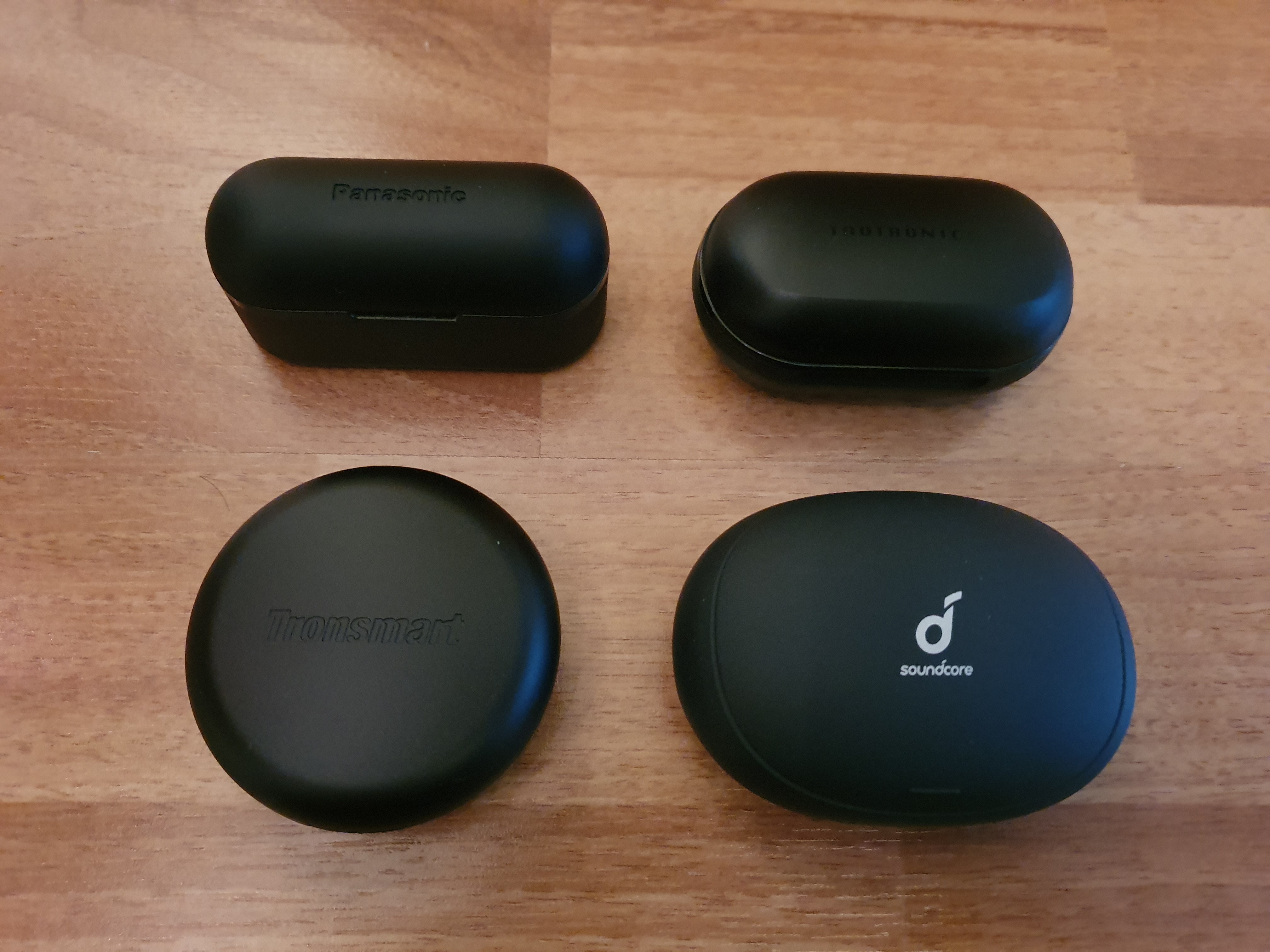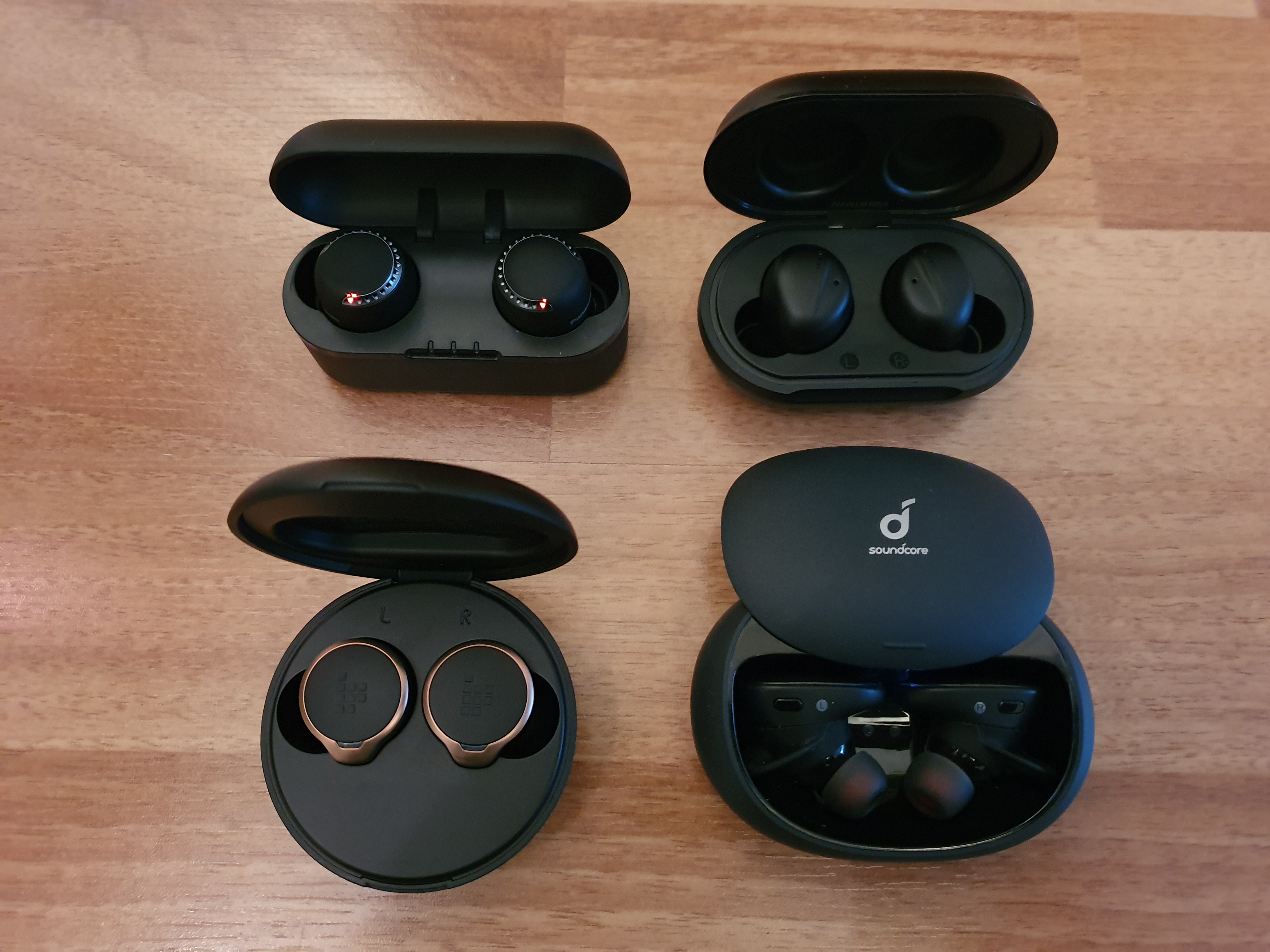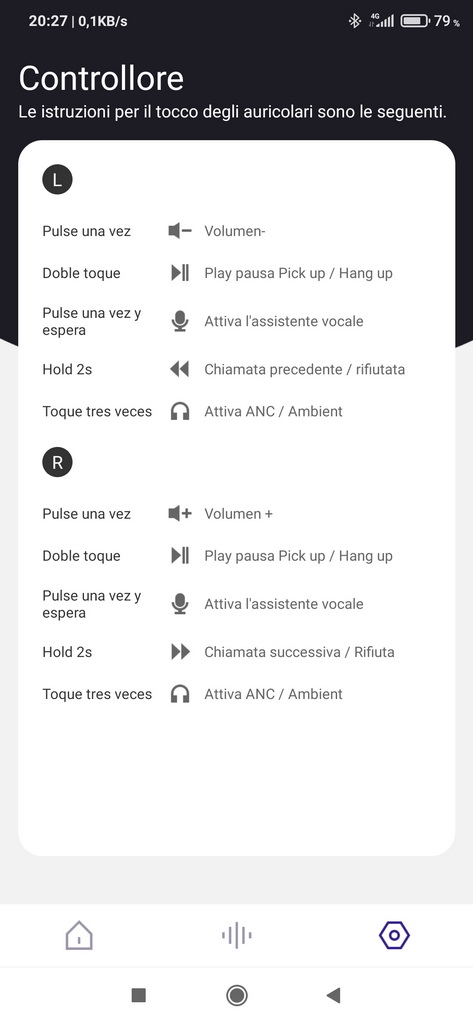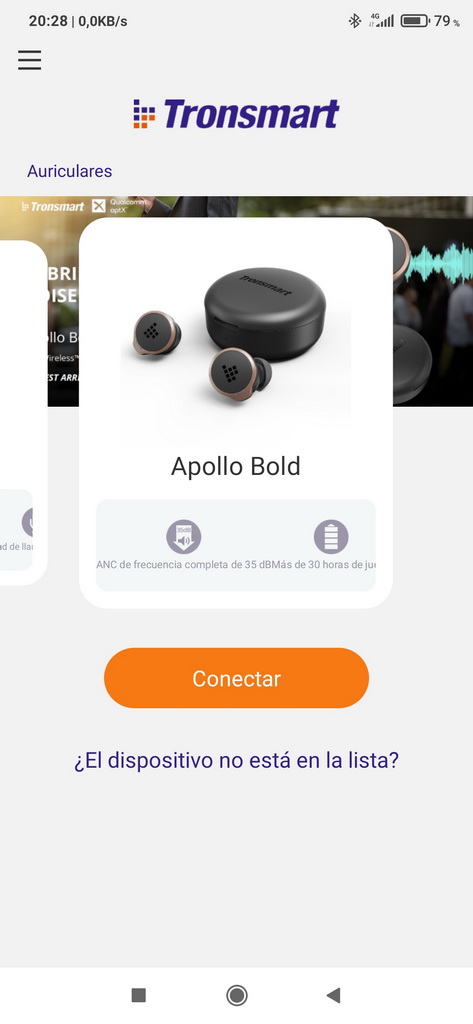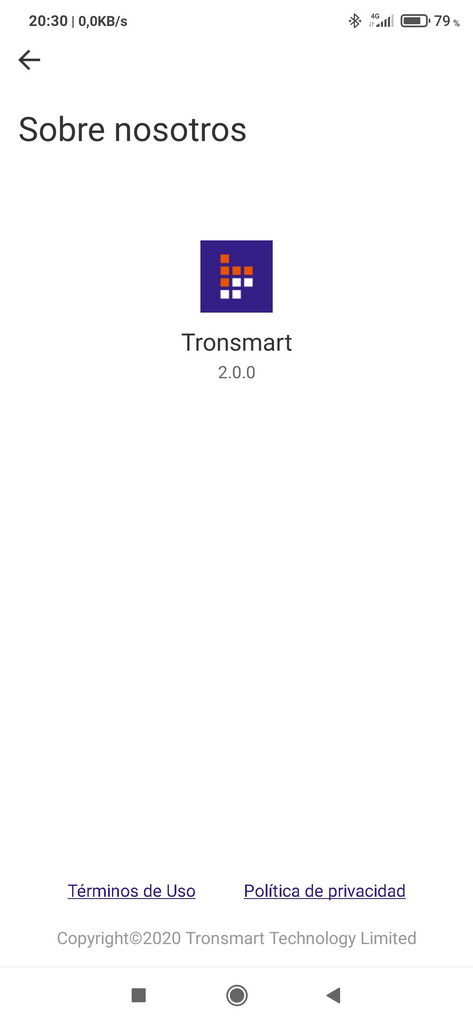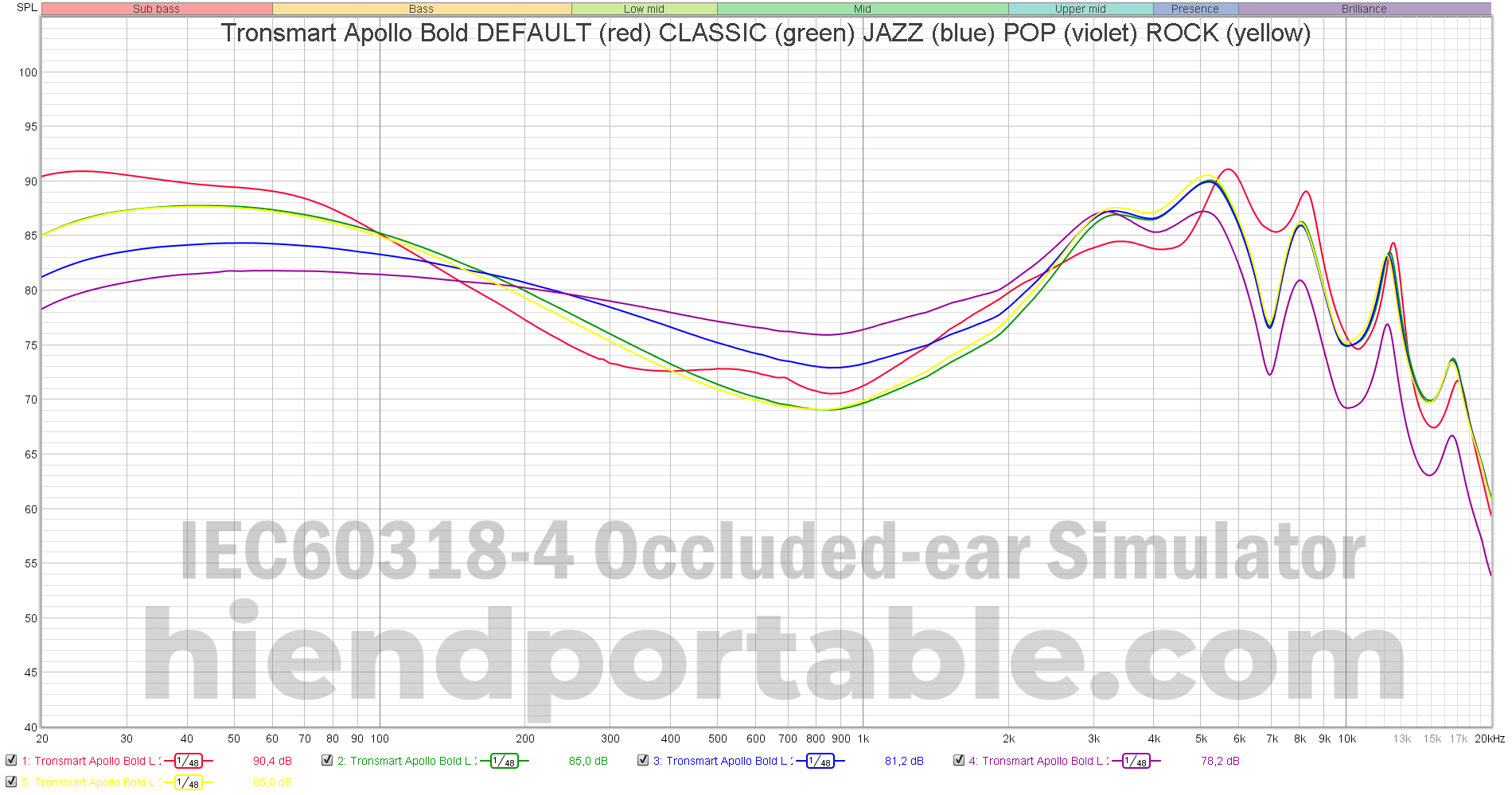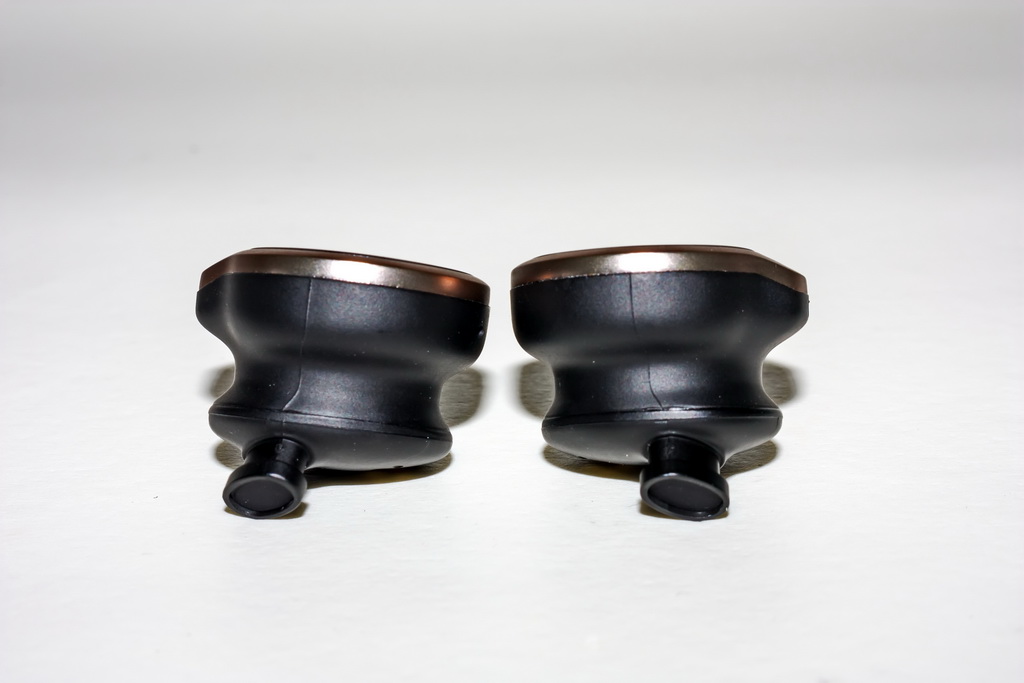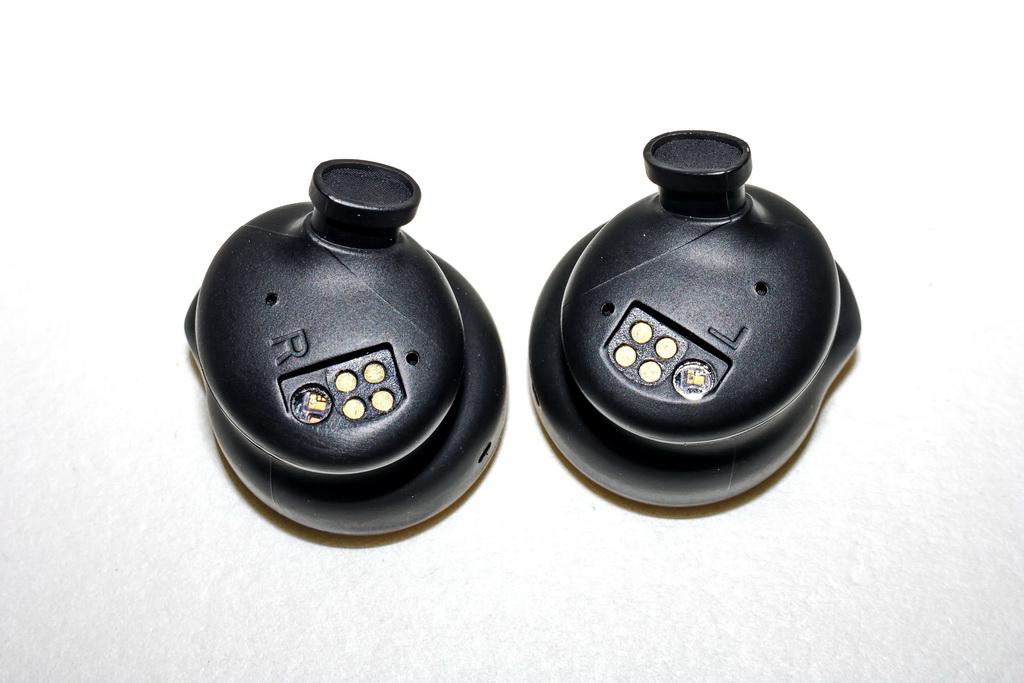Introduction
Please use this introduction as a statement of intent: I am a sceptical Bluetooth. Maybe it's because of my academic background or maybe it's because I haven't found an IEMS TWS yet, that makes me change my mind. But beliefs are there to be broken. So, when I saw the opportunity to try the Apollo Bold, I did not hesitate for a second. Will these be the TWS that get me to think differently...? I hope so, I thought. And here we are. Because Tronsmart was looking for audio reviewers, to analyse the present TWS, I was able to submit my humble candidacy and, in the end, with great pride, be chosen among the 10 candidates to analyse them. Thank you very much for selecting me!
And now, let's talk about the Apollo Bold: they are a TWS IEMS, with a circular shape, curious, but big, at first sight. Inside, the Qualcomm QCC5124 chip, renowned for its high sound quality, is integrated. Equally important is the hybrid active noise cancellation technology 360⁰, which, thanks to its 6 microphones, achieves an external sound attenuation of up to 35dB. Another virtue is TrueWireless Stereo Plus, which allows individual access to each capsule, achieving fully synchronised transmission. Finally, this little intro is noteworthy for its long battery life: up to 10 hours of playback on a single charge.
I will now go on to discuss many other details of this curious product.


 Specifications
Specifications
- Driver type: Dynamic 10mm with customised graphite diaphragm.
- Chip: Qualcomm® QCC5124, compatible with aptX, AAC, SBC. Bluetooth 5.0 TWS+
- Frequency response: 20 Hz - 20 kHz
- Bluetooth support: HFP/HSP/AVRCP/A2DP
- Transmission distance: Up to 15 metres
- Battery capacity of each capsule: 85 mAh. Charging case: 500 mAh
- Playback time: ANC activated: up to 7 hours (50% volume). ANC off: up to 10 hours (50% volume). Charging case: over 30 hours (50% volume)
- Capsule charging time: 2 to 2.5 hours. Charging case: 2.5 hours
- Impedance: 32Ω±15%
- Net capsule weight: approximately 7.0g. With carrying case: approximately 54.0g


 Packaging
Packaging
The Tronsmart Apollo Bold comes in a white box, dimensions 165x115x64mm with realistic photos of the capsules on the front. On this side, you can already see the many technologies and features of the Bold. On the back side there is an extensive summary of them, together with a photo of the open charging box, showing the IEMS. The cover unfolds in several parts, towards the left. On the inner sides of the box, the Hybrid Active Noise Cancelling (ANC) technology is detailed, as well as the construction of the capsules. On the right is the box containing the product itself: under a transparent plastic sheet, both the capsules and the charging box are embedded in a black protective mould. Under it, the rest of the accessories are stored: the silicone tips and a USB Type-C charging cable. In summary, the complete content is:
- The capsules.
- Three pairs of silicone tips, sizes SxMxL.
- One charging box.
- One charging cable, USB Type-C
- A user's manual.
- A quick start guide.
- A storage bag.
- A warranty card.
The box is large, made of very hard cardboard, colourful and very detailed, to emphasize the virtues of the product. Although, to tell the truth, the content is fair: a minimum set of silicone tips, insufficient to satisfy all the morphologies of each listener. In my case, none of the standard tips have been correctly adjusted. After much research, the JVC Spiral Dot Size L has been chosen.
On the other hand, the size of the load box, has been really very suitable, as much for its transport, as for its storage.


 Construction and Design
Construction and Design
The capsules are practically round, with a diameter of almost 21 mm. The outer face is formed by two parts: a golden outer ring, which has a U-shaped deformation, containing the microphone, on its edge and a led, on the joint with the central plate. This plate is black and tactile and has 9 squares inscribed. The height of the capsules, excluding the mouthpiece, is about 17 mm. After a uniform outer crown, approximately 9 mm thick, the body narrows to 16 mm and then widens again to more than 18 mm when it reaches the inner face of the IEMS. There is a small depression on the surface where 4 gold contacts and a sensor are located. There are two holes adjacent to this area, in addition to the letter identifying the channel, inscribed on the surface. The nozzle is short, about 4mm, oval in shape, narrower at its base than on the outside. The smallest diameter of the oval is 5mm, while the largest is over 7mm. It is protected by a thick black grid. Both the shape and the length of the oval are not ideal for tip rolling, limiting the silicones that can be used. On the other hand, the outer face is also more oval, which seeks to facilitate the fit in the pinna.
Practically the whole body is made of plastic, very light although the size is not reduced. There are many holes, two on the inner side and two around the outer edge. It is possible that the holes on that edge hold the microphones.
The charging box is black, made of hard plastic, with the letters of the mark inscribed on the lid. The diameter is almost 60mm and its height 29mm. Under the hinge there is a Type C USB port for charging. On the front edge, next to the slot that facilitates opening, near the base, is the LED that indicates the charge and status.
The materials used are mainly black plastic. It cannot be said that they are not robust, but I think that the lightness of the product has been sought more than a constructive and more durable strength. I am not saying that they are weak, but so much plastic does not suggest that they are ultra-resistant.
On the other hand, the shape of the capsule, a priori, looks large, with a diameter that may not fit in all the pinna. Its thickness is also quite large, and there is a clear possibility that it will protrude.
The shape of the nozzles and their size also do not seem to be the most suitable for achieving the best fit, insertion and insulation.
Tronsmart will have its reasons for having designed the shape of the Apollo Bold, but I do not share with them that this design is the most convenient and universal. I would have preferred a more typical IEMS semi-custom shape. Perhaps it is more difficult to accommodate all the technology used in that type of capsule.
Finally, it should be noted that the Tronsmart Apollo Bold has an IP45 water resistance and the Bluetooth version is 5.0.


 Adjustment and Ergonomics
Adjustment and Ergonomics
As I mentioned in the previous section, the almost round shape and large diameter may be too much for some. In my case, the body fits exactly into my ears. However, as time goes by, I notice that the size is greater and the discomfort appears. A slightly smaller diameter would have been more suitable for me. If we talk about thickness, this is also high. This means that the capsules protrude visibly and clearly. This would not be a major problem if the nozzles were longer, cylindrical and more ergonomically arranged, facing the canal. But no, they are oval and short, which makes the search for tips more difficult, causes a superficial fit, more susceptible to falls and detachments, as well as lighter passive soundproofing and a less immersive feeling.
In spite of all this, it is true that with the JVC Spiral Dots tips, which are very flexible, I have achieved a very adequate fixation, without them falling out. In addition, the sealing has also improved a lot, compared to the standard tips. Even so, the fit is very superficial and I think the sound could be improved if the mouthpieces were more normal and longer. I've tried bi-flange and tri-flange tips, but the orientation hasn't helped me adapt to my channel.

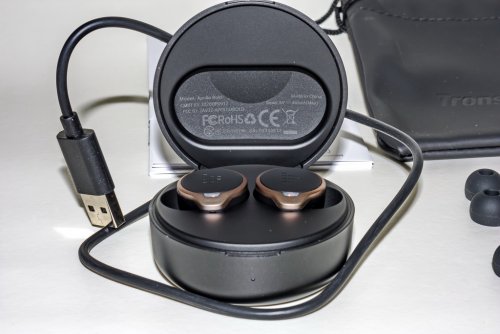
 Operation and Connection
Operation and Connection
The operation is classic: when taken out of the charging box, the TWS enters pairing mode. Take the opportunity to activate the Bluetooth on your device and connect to them. The pairing process of the TWS is normally simple. But sometimes it seems that there is no way to make the connection. This happens to me with all the TWSs I have. The Apollo Bold are no exception: both on my mobile, and on the Hiby R3 Pro, I find duplicate connections that sometimes don't work and sometimes do. At least, the pairing mode usually works the first time and lasts a long time, allowing the slower users, where I am, to activate the Bluetooth mode. The Bold can be used individually because they have microphones in each capsule, you just have to leave the other capsule inside the charging box. So far I haven't had any problems with individual pairing because they have been out of sync. That's good.
The voice indicating the status is clear and intelligible. It's a good thing, there are already times when the sentences are unclear, for those of us who don't speak English.
The LEDs light up in red and white; both their combination and alternation indicate the different states of the IEMS.
The complete operation is specified in the manuals. Below, I leave links to the multi-language manual and quick guide:
https://www.tronsmart.com/usermanual/?file=http://tronsmart.mediafire.com/file/7bdmxtjgi49r9v1/Apollo_Bold.pdf/file
https://www.mediafire.com/file/r41mj3v6nm6nir8/Quick__start_guide.pdf/file target=
The capsules have a tactile outer surface. A rich range of controls can be accessed by touching them. Their operation is explained in the following screenshot:
The experience of using tactile taps is moderately good: the detection is remarkable, but the speed between taps is something that I can't get right. Sometimes, to disable/activate the ANC, if they are too fast, they are not detected well. The same happens if they are too slow. Really, you have to find the average speed, something I don't usually achieve when I'm in a hurry or stressed at work.
The Apollo Bold has a PPP that allows certain extra features. Among them, it is possible to customize the touch commands, allowing to assign different functionalities to those programmed as standard. The APP also allows you to activate the sound reduction mode, environment or deactivate it, even displaying the battery level of each capsule. In addition, there is a screen where the various predefined equalisations can be activated:
- Defect
- Classic
- Jazz
- Pop
- Rock
The use of APP is not very fast. The connection of it with the Bold, even with the mobile phone already connected to the headset, is not immediate, but it is necessary to look for it. Even, something that never ceases to surprise me and I find inconvenient, is that it is necessary to activate the location to be able to link to the Apollo.
At the APP you can choose your language, in my case Spanish. Although I must point out that, on some screen, the texts were in Italian.
Another feature of the APP is the possibility of updating the firmware via OTA. I have tried it multiple times and during several days, without success. From the Tronsmart website there is an alternative: a different APP and a manual process. This APP is called GAIA Control. You must follow correctly and to the letter, all the instructions explained in the following link, for the update to be satisfactory:
https://www.tronsmart.com/blog/85_how-to-update-the-firmware-of-your-apollo-bold.html
On this page you will find the APP GAIA Control and the firmware. At the time of writing this review, the most recent firmware was v1.2.3.
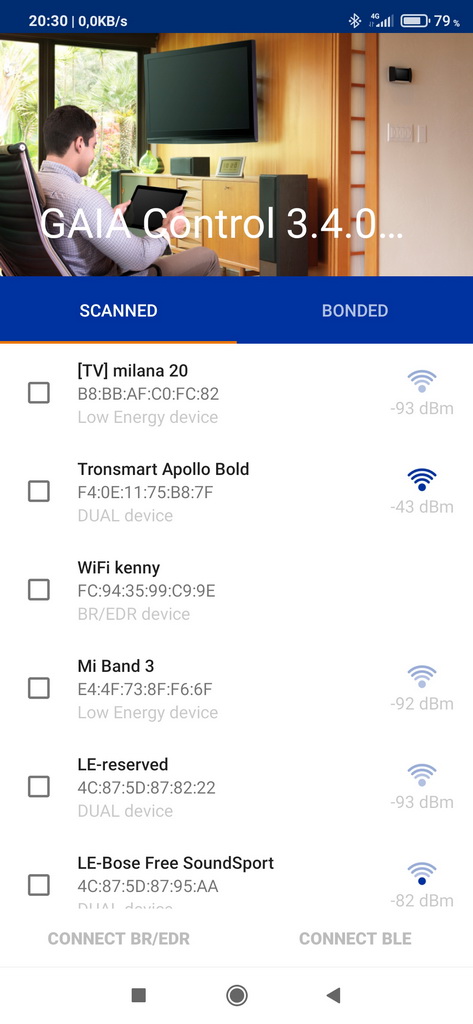

It is true that I am not an expert in TWS headsets, but I must admit that my experience of use, both with calls and with music, has been the most satisfactory to date. I have used the Apollo Bold in my office, for multiple work calls, using the ambient mode to not lose track of what is going on around. And, really, these TWS are the best that I have tried. Their microphone may not be the clearest, but even in a low coverage environment, none of my listeners have told me anything beyond that they were using a hands-free device. The sound has always been good, with no cuts, losses, achieving a full day's worth, talking for more than an hour, even two. And the next day he started again. In the evenings I used the Apollo Bold with my personal Smartphone or the HiBy R3 Pro indistinctly. The selected codec has always been aptX. One thing I would have liked, is that it was compatible with aptX-HD, or even with LDAC and that you could choose that codec by the APP, as well as the sampling rate or transmission speed.
These good sensations are probably the result of the chip that implements the Qualcomm QCC5124, as well as its LDS antenna. Thanks to it, the Bluetooth range, in large, open rooms, is clearly the right one. As soon as I moved inside my small flat, full of walls and doors, the connection was surprisingly maintained. Only at the points furthest away from the transmitter and behind several doors and walls have I noticed connection losses. But I really expected the range to be worse. This is another very positive point.
However, the use of the Apollo Bold in the street has not been so satisfactory. Using the ANC (default on) is convenient as a sound reduction, but it can ruin the sound experience. In the graphics (perhaps because of the noiseless environment in which they were taken) there is hardly any difference. But when sound reduction is activated, the bass becomes too uncontrolled, distorting at maximum volume. It may help to choose other equalisation modes, but I have always preferred not to use ANC, especially with electronic music, high volume and the default EQ mode.
On the other hand, disabling ANC changes things for the better, getting the best sound I could hear during my short TWS experience.
Another very nice feature is the proximity sensor, which allows you to pause the music automatically when you remove the capsules or any of them.
Sound
One thing that I don't like very much about TWS, is the limitation of its volume. For most users, it's quite possible that the sound pressure level is adequate, when playing current music. But when using older recordings, with greater dynamic range, the volume is considerably lower. In my opinion, and this is a general opinion among all the IEMS TWS I own, the volume is fair. Perhaps it is the best way not to damage our ears...
Profile
The Apollo Bold have different types of equalization, capable of changing their profile. By default, their profile has a tendency between U and V, with clear emphasis on sub-bass and early highs. If the EQ Rock or Classic is chosen, the presence in the sub-bass and early treble is reduced, adopting a more V sound, where the mid-bass and mid-high are emphasized (with less emphasis). With the EQ JAZZ, the bass is lowered and the mid-range is enhanced in order to achieve a flatter, more homogeneous and balanced profile. However, it is with the EQ POP that the most neutral sound is achieved, except for the enhancement in the high mids, and then lost in treble extension.
For my taste, the two preferred EQs are the default and the ROCK.
My considerations about the sound have been taken with the default EQ, since its sound, despite the marked enhancement in the low zone, has seemed to me more realistic in the rest of the bands.
Bass
The lower area is quite high, especially at the sub-bass end. Its tone is somewhat dark, the speed is not very high, the recovery feels a little slower and the definition is correct. As a result the sound is eminently bassy, with a clear warm tendency, but without falling into a sound completely devoid of light. Although, it is true that the notable presence of bass, makes a certain inclination to offer a somewhat more diffuse area, when the passages are complex, with overlapping bass. In these cases, the clarity suffers, generating a muffled and soft bass layer, where the precision is not very high, affecting the general resolution capacity of the low range. When the beat is simple, the work is done quite acceptably, generating a sound that has good depth, not too coloured, that seeks a realistic timbre, but without immediate recovery. It is, therefore, that deposit that prevents the area from being cleaned up more, preventing the sound from enjoying greater refinement. With the EQ ROCK or CLASSIC, the bass improves quickly, allowing more details to be revealed, finding a more contained and free sound in the lower area.


 Mids
Mids
The midrange drags warmth and sediment from the lower range, more because of the medium speed of the bass, than because of direct incidence. This makes the range not start in a pure way. However, there is a clear benefit in the lower part of the midrange: the body in this part gives a musical consistency that I miss in the rest of the equalisations. In this way, I feel the voices with a timbre that is quite pleasant, soft and free of sibilance. Its presentation is wide, rounded, homogeneous, quite smooth and soft, with a limited detail, but with a pleasant drawing, of long strokes that end diluted. In the female voices, the presence is slightly raised, offering a little more of a final spark. On the other hand, the clarity is not very high, which contributes to the definition not increasing, affecting the general resolution capacity. The softness and warmth, limits the sound to be more polished, clean, separate and defined. I still think that they are not dark, only that they have a medium-low analytical capacity. In this way the details recreated are not very high and the level of nuances is acceptable, very suitable for quiet, long and pleasant listening. Advocates of analytical sound, abstain. But those who flee from the elevated high-mids are welcome. (Remember: EQ by default).

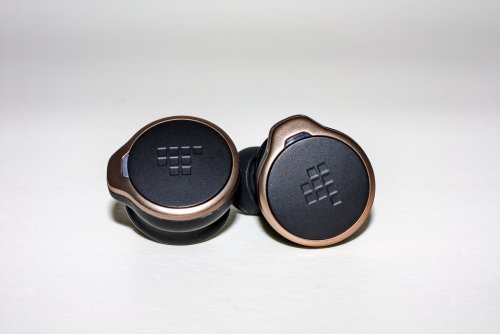
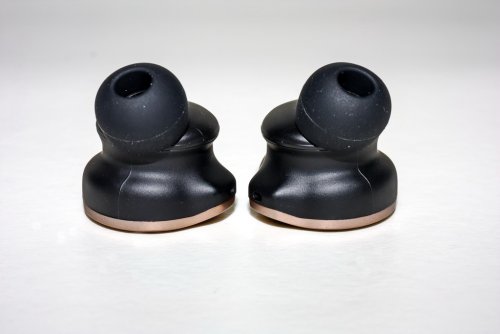 Treble
Treble
The upper area is quite well profiled. For my taste, the trebles are shown when needed, with a realistic drawing, relatively sharp, without excesses, but with a very dignified and palpable poise and presence, as well as a remarkable extension. They still do not possess a great delicacy or resolution capacity, which draws them very fine or thin. But they do have a good dose of sparkle and crunch, which makes them fun without being boring or even annoying. Quite the opposite, I think they are quite enjoyable, without feeling strange about the overall profile of the EQ by default. In this way, the treble offers a good counterpoint, without losing the quietness, nor gaining in definition, but adding a good dynamic to the Apollo Bold's sound.

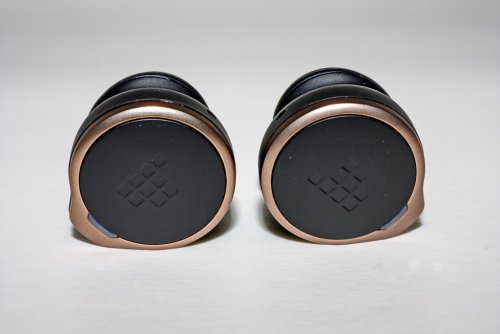
 Soundstage, Separation
Soundstage, Separation
The Apollo Bolds have a moderate scene, which keeps them away from congestion. There is no perceived narrowness or heaviness in their sound. They enjoy a good level of depth and a more than acceptable height. In this way, the stage presented is perceived eminently frontal, but with a semi-circular drawing, without being wrapped up.
The instrumental recreation is not very precise and the location of the instruments does not stand out for its accuracy, but rather, the music is presented in a more fluid than focused way. In this sense, the perception of the separation has a great influence, since the soft cohesion of the sound does not contribute to the notes having the necessary space for the separation to be greater, the background to be darker and the scene to expand more easily and extensively. For the same reasons, the detail, although the highs are good, is quite primary, highlighting the obvious parts and the medium distances, without being very capable of revealing very deep or less accessible nuances at the micro level. Although it is not a sparse sound, too nuanced or dull. Rather, it is a soft, homogeneous, warm, fluid and calm sound, which does not seek an analytical presentation, but a more coherent, friendly and generalist exhibition, without losing sight of quality.
 Conclusion
Conclusion
I have to celebrate that Tronsmart has helped me to believe that Bluetooth technology has not yet had its last word. With their Apollo Bold model, I have been able to enjoy wireless music at a level, which allows me to dream of sound quality similar to wired IEMS. Or at least, make me forget about them for a while. It's undeniable that the many advantages this model brings have made the user experience much more rewarding: wireless comfort, wide signal range, battery life, ease of use, active noise reduction, ambient mode, customisable touch functionality, control APP and a more than remarkable behaviour in phone calls and conversations. I am sure that all these advantages are due to the fact that Tronsmart has used the best technology at a very competitive price: Qualcomm® QCC5124 chip, Hybrid ANC, aptX, TrueWireless™ Stereo Plus, LDS laser antenna...For all these reasons, I can say that there is sound at the end of the Wireless.
Sources Used During the Analysis
- Xiaomi Redmi Note 8 Pro
- HiBy R3 Pro
- xDuoo X3II
- Tempotec V1-A
Ratings
- Construction and Design: 80
- Adjustment/Ergonomics: 75
- Accessories: 70
- Operation and Connection: 88
- Sound: 75
- Quality/Price: 90
Purchase Link
You can read the full review in Spanish here:



















